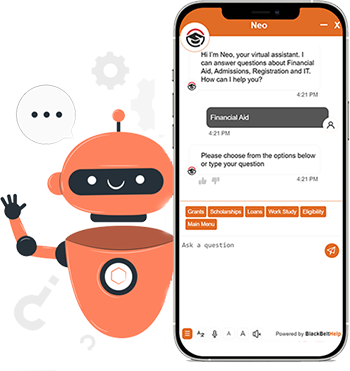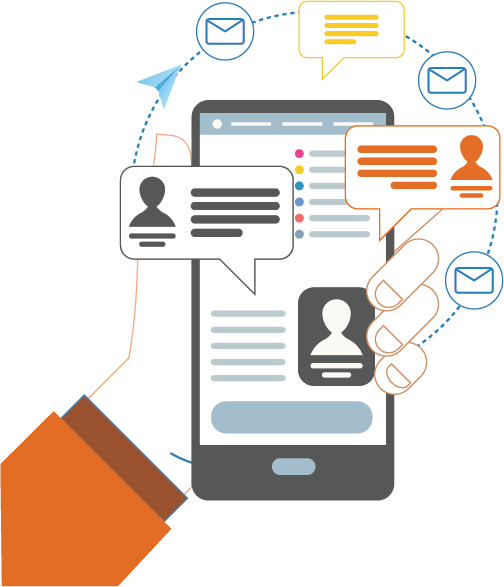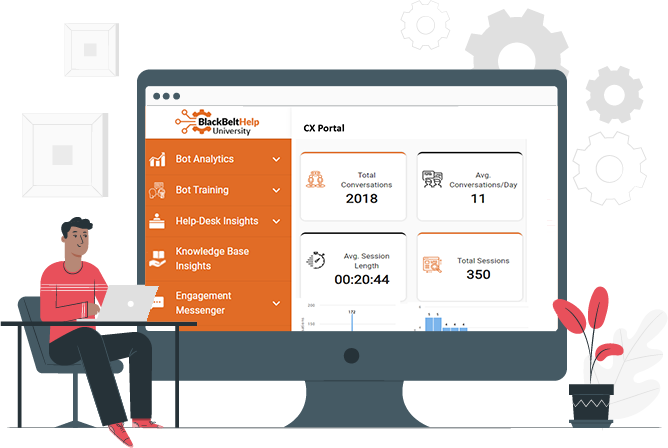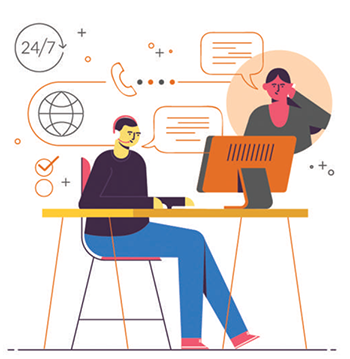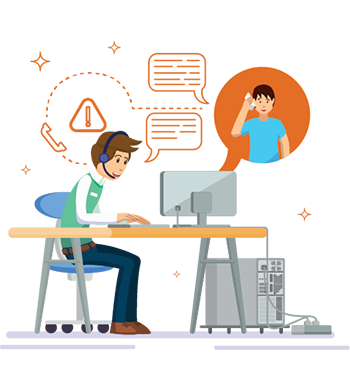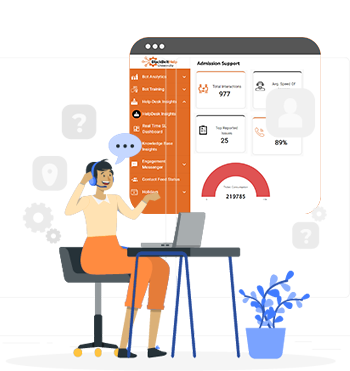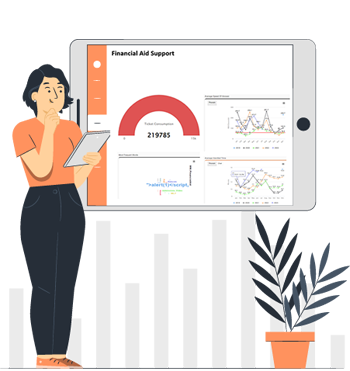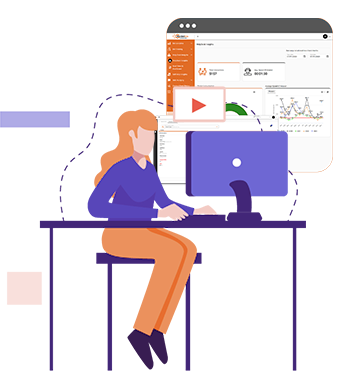AI Chatbots for HigherEd: Solving Challenges While Scaling the Gaps
Touted as the next big thing, Artificial Intelligence has already carved a niche for itself in the form of AI chatbots for highered. In today’s world of instant gratification; bots deliver on the rising expectations of students, augment the institutional staff’s capabilities and help the institutions achieve their various goals (enrollment, engagement, retention, etc.).
Following are some ways in which AI bots (chatbot/voice bot) have made a significant positive impact on the higher education realm:
AI Chatbots for highered results better student engagement:
In the modern-day higher education space, effective communication is one of the keys to ensuring student success. Students today, whether enrolled or prospective, have a perpetual online presence and expect instant, 24×7 “Whenever, Wherever” support when faced with challenges during their academic and service journeys. It is this expectation that institutions can deliver on with AI bots. Further, communication with bots is a two-way process that encourages the students to engage when they are ready and on their own terms. Students’ ability to engage with bots in real-time makes the touch more personalized and ensures their queries are addressed.
Chatbots for highered results great customer service:
Educational institutions today strive to do more with less as their goals surrounding enrollment, retention, graduation, and student success increase every year while their resources don’t. Trying to do so results in overburdened staff, increased service wait-times and eventually poor customer service.
AI bot resolves this conundrum. With a one-time implementation fee and minimal recurring maintenance charges, AI bots prove to be an effective solution for higher education’s increasing student support demands. Institutes that have AI bots can achieve most of their goals without hiring additional staff. Besides, AI chatbots have a 24×7 availability. They are always on, always happy to serve, and can provide highly personalized answers to student-specific inquiries. They can also handle multiple users simultaneously. During peak times, chatbots can address students’ preliminary queries taking the significant workload off the staff’s shoulders. This frees institutional staff to focus on high-value and complex student issues.
Basically, AI bots are a win-win option for all the stakeholders involved i.e. students, staff and the institution.
The X factor of AI chatbots for highered:
Higher education has become very competitive in recent years with many universities and colleges offering similar programs and fee structures. Given the situation, institutions today need to go the extra mile to stand out and be attractive to prospects and students.
A chatbot is that X factor that differentiates an institution from its competitors. AI chatbots can not only brand an institution as innovative and up-to-date in technological aspects but can also help to decrease summer melt (a phenomenon where students’ motivation to attend college melts away during the summer between the end of high-school and beginning of college), improve retention, and boost staff efficiency.
Vital for non-traditional students:
Chat and voice bots are a great help when it comes to non-traditional students (who don’t fall in the traditional 18-24 age cohort or are working full time/part-time jobs or are pursuing online courses rather than attending classes on campus).
Bots can play useful roles for this group of students. For example, they can be designed to act as personalized information brokers or students’ assistants. These bots can inform such students about approaching deadlines, application status, address their support queries 24/7, keep them updated about the upcoming events on campus, and provide them assistance with locating offices or classes during their visit to the campus, etc.
Modernizing the conventional helpdesk:
AI Chatbots and voice bots should not be looked at as replacements for the support staff at a campus. As however personalized the chatbot conversations are, there are issues that demand human touch, intelligence, or expertise. That’s why, rather than replacing support staff with chatbots, institutions should look to chatbots for modernizing the conventional support desk experience for students.
For example, when an institution’s staff are spread thin during peak times or are trying to support hundreds if not thousands of students individually, bots can fill that gap. Preliminary tier 1 issue can be redirected to AI chatbot and answers to frequently asked questions can be automated. This will lessen the staff’s burden and ensure that the front-line support team doesn’t waste time performing repetitive tasks that can be easily automated and performed by bots.
The bottom line:
Chatbots for highered are bound to grow manifold. A report by the research firm Technavio states that the global market for AI in higher education is projected to grow at a CAGR (compound annual growth rate) of 39% by 2020. This figure shows how AI as a technology is gaining traction at an unprecedented pace in educational institutions. Chat and voice bots have an undeniable claim to the major part of this AI footprint in highered.
While AI bot won’t resolve all the systemic challenges, they can certainly help in bridging the gaps in an institution’s student support ecosystem.

